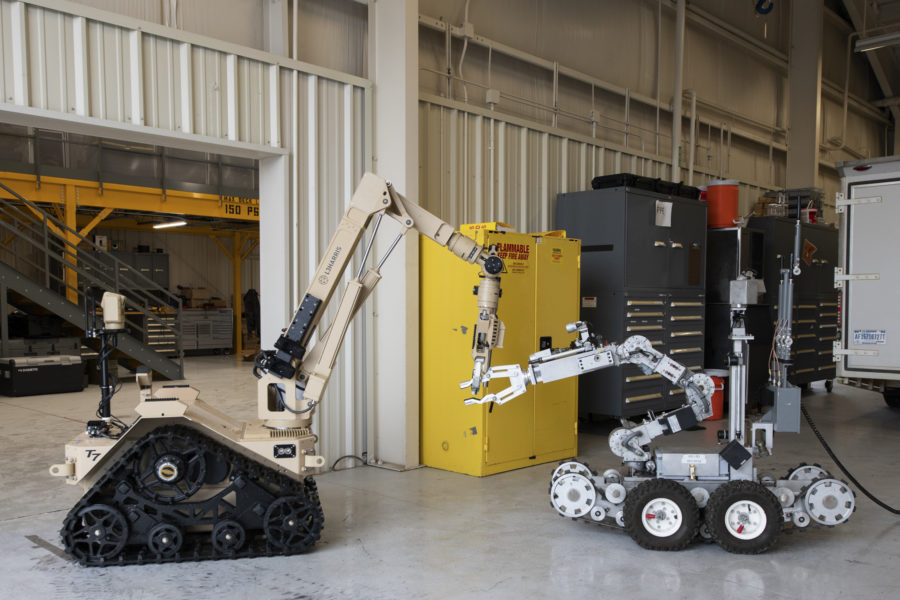The Air Force has received its first new large-size explosive ordnance disposal robots, the latest in a series of upgrades to better equip EOD Airmen to clear unexploded bombs on runways and other air facilities.
Four of the new T7 robotic systems were formally handed over to the Air Force by contractor L3Harris, according to a Dec. 15 release. The handover came a few months after the 96th Test Wing’s explosive ordnance disposal flight began training on the system.
The new robots replace the F6A, which the Air Force has used for the past two decades to dispose of explosives at bases around the globe. The Air Force and L3Harris say the T7s are faster and havemore cameras, farther reach, stronger robotic arms, longer battery life, and extended radio range, so operators can control the robot from farther away.
The Air Force has ordered 107 of the robots and could buy as many as 170 under its contract with L3Harris.
“The T7 will help safeguard Air Force EOD operators as they mitigate explosive threats around the globe,” said L3 Harris President for Space and Airborne Systems Ed Zoiss, in a release. Calling the T-7 “the world’s most capable robot for challenging EOD tasks” he added: “We’re keenly aware of what’s at stake for these operators and constantly refine and enhance our robotic systems to minimize risk and maximize utility during these dangerous, no-fail missions.”
The delivery of the new robots into the Air Force inventory comes a little over two years after the service began rolling out its medium-sized EOD robot, the Man Transportable Robot System Increment II (MTRS II). Compared to the 710-pound T7 checks, the MTRS II weighs only around 160 pounds. The Air Force ordered 330 of the smaller robots.
More recently, the Air Force announced plans in February to field reconditioned armored vehicles equipped with lasers to detonate unexploded ordnance on airfields.
The RADBO, for Recovery of Airbase Denied By Ordnance, is based on the Cougar Mine Resistant Ambush Protected vehicle (MRAP) and will have a robotic arm to investigate runway craters for unexploded ordnance, and a three-kilowatt Zeus III laser that can detonate “heavily cased” unexploded bombs from as far as 300 meters away.
Unlike the T7 and the MTRS II, the RADBO would do “disposal by detonation,” which officials say is often the safest and easiest way to get rid of explosive threats.
